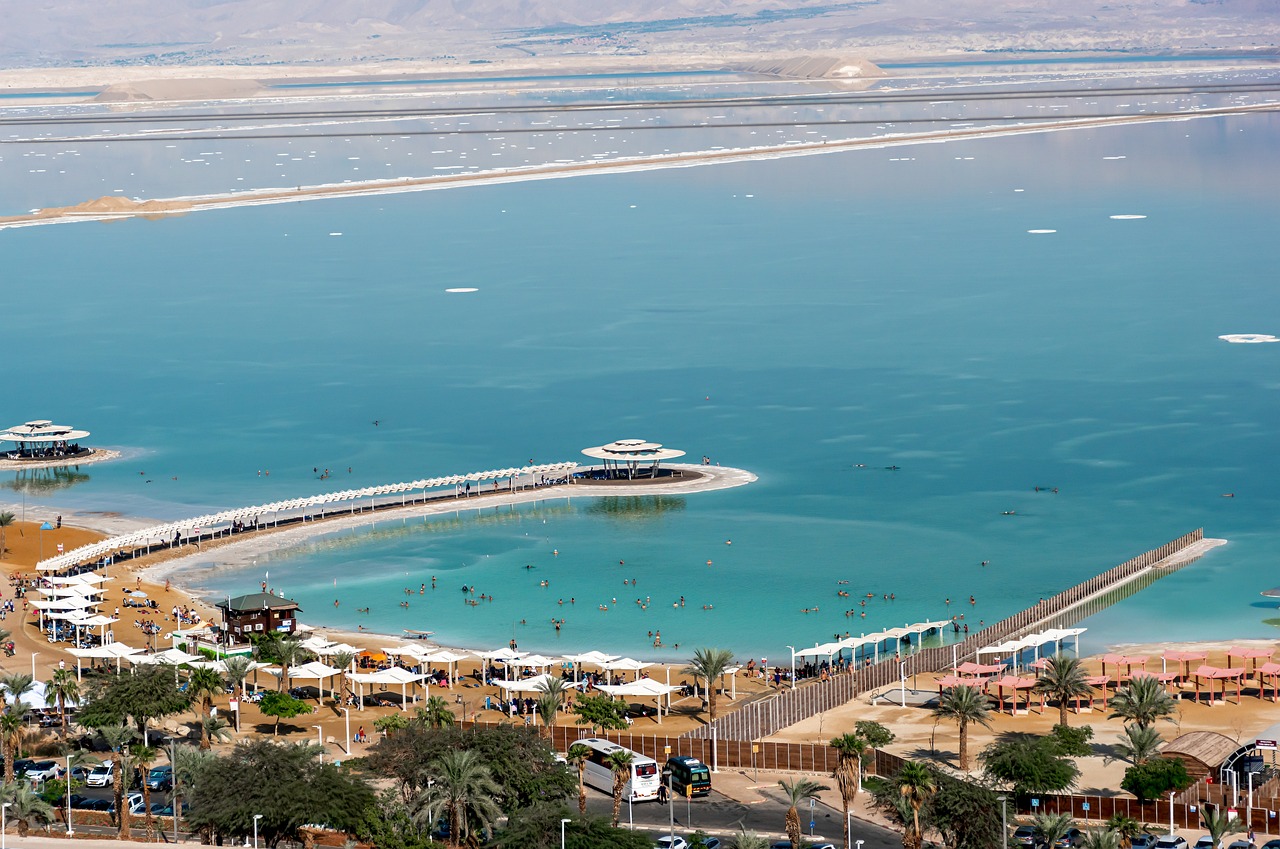The Dead Sea, one of the world’s most saline bodies of water, is as renowned for its historical significance as it is for its therapeutic properties. Situated at the lowest elevation on Earth’s surface, this natural wonder has fascinated travelers, researchers, and spiritual seekers for millennia.
Geography and Formation
The Dead Sea is a salt lake bordered by Jordan to the east and Israel and Palestine to the west. With a surface elevation of approximately 430 meters (1,411 feet) below sea level, it is the Earth’s lowest land point.
This unique body of water lies in the Jordan Rift Valley and is fed by the Jordan River. It’s about 50 kilometers long and 15 kilometers wide, covering an area of approximately 600 square kilometers.
Unlike most lakes, the Dead Sea has no outlet. Its high salinity, which averages around 33.7%, results from water evaporating at a faster rate than it is replenished, leaving behind vast amounts of salts.
Historical Significance
The Dead Sea region holds deep historical and religious significance. Here are some highlights:
Biblical References: The Dead Sea and its surrounding areas are frequently mentioned in the Bible. Notably, it’s believed that the cities of Sodom and Gomorrah once stood nearby. The sea itself is often referred to in scripture, painting a vivid picture of its uniqueness.
Dead Sea Scrolls: Discovered in the late 1940s in the Qumran Caves near the sea’s northwestern shore, these ancient manuscripts contain parts of the Hebrew Bible and offer insights into Jewish life and thought around the time of Jesus.
Therapeutic Properties
The Dead Sea is often dubbed a ‘natural spa’. Its mineral-rich mud and water, as well as the region’s atmospheric conditions, have been sought after for therapeutic treatments for centuries:
Skin Benefits: The mineral-rich mud is often used as a natural skincare treatment. The high concentration of magnesium, sodium, and potassium can help with conditions like psoriasis, acne, and eczema.
Respiratory Benefits: The atmospheric conditions near the Dead Sea, which are rich in oxygen and bromide, can offer relief to those with respiratory conditions, such as asthma or chronic bronchitis.
Floating Experience: Due to its high salinity, one can easily float on the Dead Sea. This buoyancy is not only a unique experience but is also believed to help relax muscles and joints.
Environmental Concerns
Over the past few decades, the Dead Sea’s water levels have been dropping at an alarming rate of about one meter per year. This decline is primarily due to water diversion from its main tributary, the Jordan River, and the mining of minerals. The reduction in water levels has led to the formation of dangerous sinkholes and poses a threat to the region’s unique ecosystem.
Efforts are underway to counteract this shrinkage, with proposals like the Red Sea-Dead Sea Canal, which aims to channel water from the Red Sea to the Dead Sea. While such projects offer hope, they also come with environmental and political challenges.
Conclusion
The Dead Sea is a marvel of nature, a place where history, religion, and therapeutic properties converge. While it remains a popular destination for travelers and those seeking its therapeutic benefits, preserving its unique ecosystem is crucial for future generations. Like many natural wonders, it serves as a reminder of the delicate balance between nature and human activity and the responsibilities we hold in ensuring its survival.
Author

An aspiring business leader, I am working towards my dream of graduating from Stanford University with a degree in Business Management. Passionate about sharing knowledge, I strive to empower others through education and collaborative learning.
View all posts


